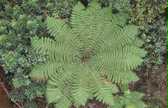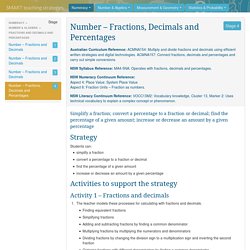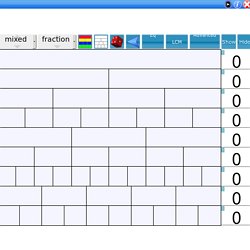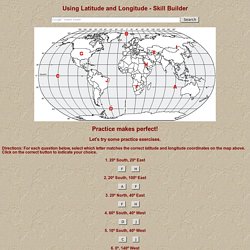

SMART Teaching Strategies. Strategy Students can: simplify a fraction convert a percentage to a fraction or decimal find the percentage of a given amount increase or decrease an amount by a given percentage Activities to support the strategy Activity 1 – Fractions and decimals.

Time. Graphing Stories - 15 seconds at a time. Get The Math. Interactive Fraction Wall explore Fractions Percentages and Decimals. Fraction walls are a great way to teach about fractions and in particular equivalent fractions.

In a fraction wall each row or layer of the wall represents one whole number. The layers are divided into a number of bricks and hence each brick represents a fraction whose denominator is equal to the number of bricks in that layer. Each brick can be turned on or off by clicking it. This wall also allows the display of decimal and percentage values. To the right of the wall are boxes which can be hidden, the value of each box is fraction of the wall that has been turned on. Selecting different walls When you launch this interactive teaching program the initial wall is a mixed one showing 3 distinct fraction families. Fractions, decimals or percentages Use the display type control to display decimals (rounded to 2dp), percentages (rounded to 1dp), fractions or none.
The equivalent fraction control Normally when you click a brick to turn it on or off, only that brick is affected. Other controls. Desmos Classroom Activities. Visual Patterns - 1-20. Graphing Stories - 15 seconds at a time. Sign in - GeoGebra. 30-maths-starters. Graphing Stories - 15 seconds at a time. Matchstick Sequencing. MapMaker Page Maps. Latitude and Longitude Practice. Using Latitude and Longitude - Skill Builder Practice makes perfect!

Let's try some practice exercises. Directions: For each question below, select which letter matches the correct latitude and longitude coordinates on the map above. Click on the correct button to indicate your choice. 1. 20º South, 20º East 2. 20º South, 100º East 3. 20º North, 40º East 4. 60º South, 40º West 5. 10º South, 40º West 6. 0º, 140º West 7. 40º North, 100º West 8. 80º North, 0º 9. 40º North, 60º East 10. 50º North, 120º East You have completed all the sample exercises. Is It Better to Rent or Buy? Ttalgebra.edc.org/sites/ttalgebra.edc.org/files/Sample_Puzzle_Page.pdf.
Domino Effect : A Lesson by Mathalicious. National Library of Virtual Manipulatives. The Interactive Mathematics Classroom. Cleo resource: Flasks and Graphs. Illuminations: Welcome to Illuminations. Patterns in Mathematics. Some people say that mathematics is the science of patterns.

That's not a bad description. Not only do patterns take many forms over the range of school mathematics, they are also a unifying theme. Number patterns—such as 3, 6, 9, 12—are familiar to us since they are among the patterns we first learn as young students. As we advance, we experience number patterns again through the huge concept of functions in mathematics. But patterns are much broader. Visit the lab to explore logic patterns, number patterns, and word patterns. Universcale. Game - Credit Card Simulator - Channel One News.
Whiteboards - Primary Mathematics. Mathematical applets and videos for 11- to 19-year-olds. Math. Illustrativemathematics. Loan calculator. ANZ - Credit card statements - Your credit card statement explained. Renovate, Calculate! How to Read a Credit Card Statement. Home. Calculation Nation® - Challenge others. Challenge yourself.® What's Special About This Number? Motivate.maths.org. 4000 years ago, children in school were learning maths just as they do now.

But what maths did they learn and how did they learn it? In this resource pack, Dr Eleanor Robson, shows us how we can find out about an ancient civilisation through the objects they left behind. She demonstrates clay tablets on which Babylonian children worked at their multiplication tables - in base 60! Through the video clips and follow-up resources, we can find out how they did arithmetic and how they learnt their tables. Eleanor also demonstrates the difference between how we generally draw a triangle now and then, and how the Babylonian style of writing - cuneiform - relates to their triangles. The resources in this pack complement the video clips, providing activities designed to help students understand the similarities and differences between maths then and now.
Sweet Home High School Math Textbooks. Mathematics Illuminated. Graphing Calculator. KS2 Bitesize Maths - Decimals : Fullscreen.